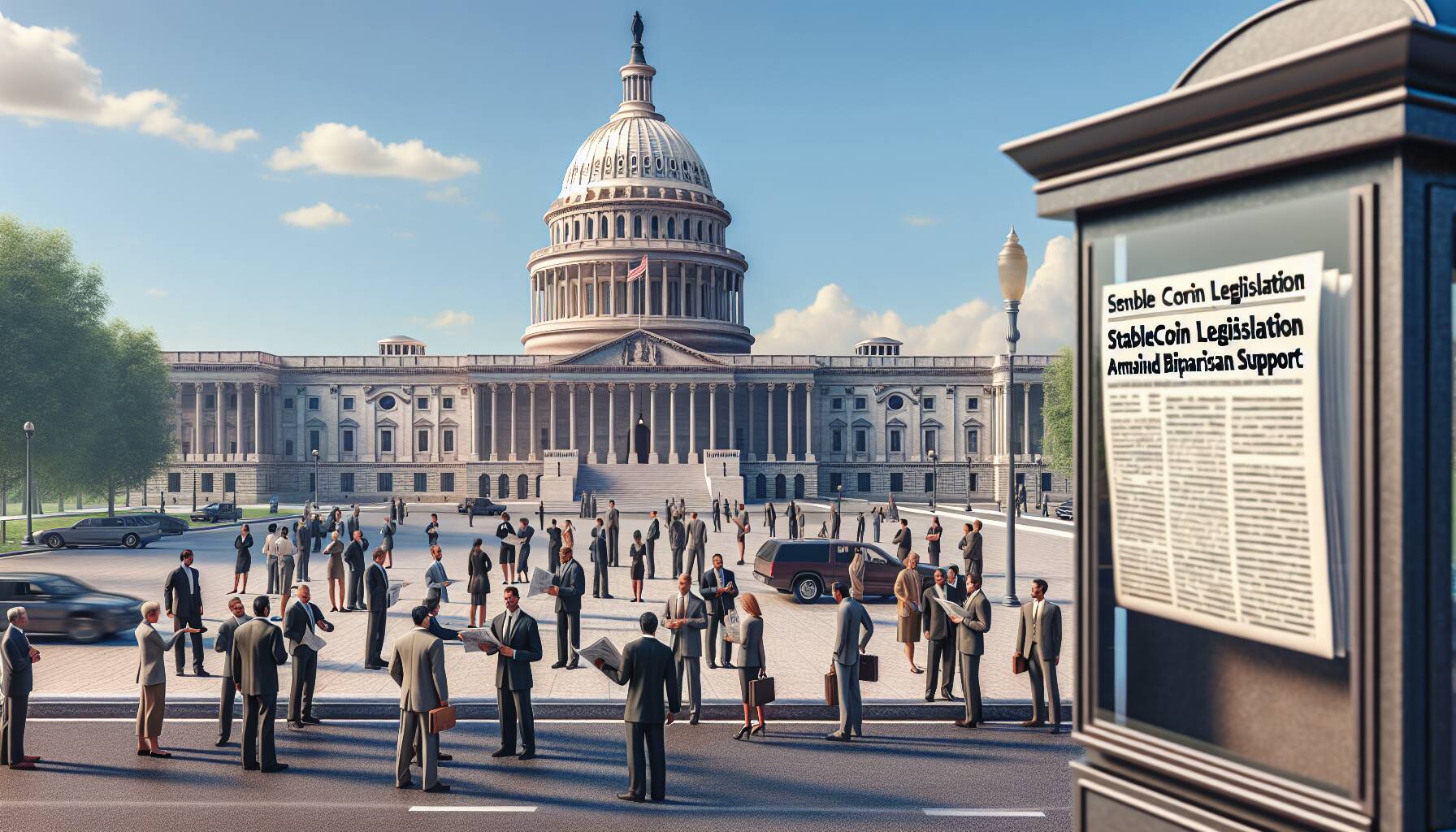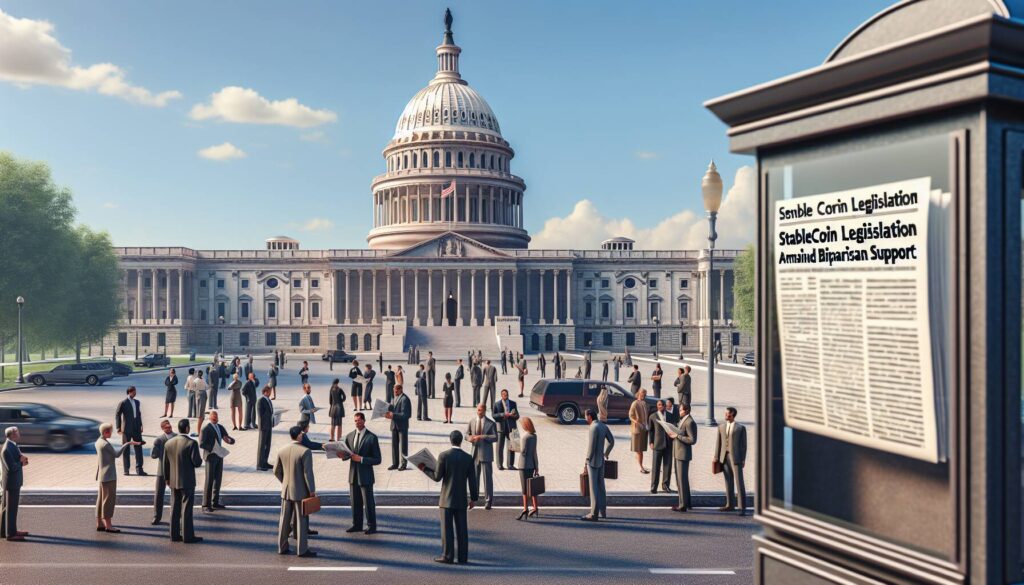The U.S. Senate has taken a significant step forward in the world of cryptocurrency by advancing stablecoin legislation during a vote held Monday night. With a decisive majority, senators surpassed the critical 60-vote threshold, paving the way for further debate on this important regulatory framework. This move comes as part of ongoing efforts to establish a comprehensive set of guidelines for stablecoins and their issuers in the United States, a developing area that has captured the attention of lawmakers and industry participants alike.
While the House of Representatives is simultaneously working on its own version of stablecoin legislation, the Senate’s progress marks a key moment for proponents of digital currencies. Just a month earlier, on May 8, the Senate had failed to achieve the same level of support, primarily due to concerns raised by Democratic lawmakers regarding consumer protection and national security. Interestingly, that vote saw bipartisan opposition, with Republicans Josh Hawley and Rand Paul also voicing their disapproval.
“There’s enough in the newest version of the bill to address some of Democrats’ concerns,” noted one individual close to the negotiations, highlighting the importance of recent discussions among lawmakers.
In the lead-up to this latest vote, extensive negotiations on the bill’s language took place, leading to optimism about its passage. Several Democratic senators who previously opposed the legislation, such as Ruben Gallego and Mark Warner, reversed their stances and supported the push for cloture, signaling a potential shift in the political landscape surrounding cryptocurrency regulation.

U.S. Senate Advances Stablecoin Legislation
The recent developments in the U.S. Senate regarding stablecoin legislation could significantly impact both consumers and the financial industry. Here are the key points:
- Advancement of Legislation:
- The Senate voted to move forward with stablecoin legislation, surpassing the 60-vote threshold necessary for further debate.
- This legislative progress aims to create a regulatory framework for stablecoins and their issuers in the U.S.
- Previous Setback:
- A prior attempt to advance the same bill failed due to concerns from Democratic lawmakers about consumer protections and national security.
- The bipartisan opposition led to a reevaluation of the proposed legislation’s language and provisions.
- Negotiation and Amendments:
- Prior to the successful vote, lawmakers engaged in negotiations to introduce changes aimed at addressing earlier concerns.
- Some Democrats announced their support following amendments that they felt were sufficient to address issues with consumer protection.
- Impact on Consumers and Industry:
- The bill’s passage could affect how stablecoins operate, potentially increasing consumer trust through enhanced protections.
- Establishing regulations may impact investment opportunities and the overall landscape of digital currencies in the U.S.
“There’s enough in the newest version of the bill to address some of Democrats’ concerns.” – Industry insider on the legislative negotiations.
U.S. Senate Advances Stablecoin Legislation: A Game Changer or a Compromise?
The recent advancement of stablecoin legislation by the U.S. Senate marks a pivotal moment in the financial landscape. With bipartisan support, the Senate has removed a procedural hurdle that has previously stalled progress. This legislative move aims to establish a comprehensive regulatory framework for stablecoins, which could reshape how these digital assets operate in the U.S. market.
Competitive Advantages: One of the most significant advantages of this legislation is its potential for clear regulatory guidelines. By creating a structured framework, financial institutions and digital currency firms will be better positioned to understand compliance requirements. This clarity could lead to increased innovation in the sector, attracting more investment and facilitating broader adoption of stablecoins across various industries. Moreover, the support from both parties indicates a strong commitment to ensuring that the U.S. remains a player in the rapidly evolving crypto space.
Another key advantage is the proactive approach to addressing previous concerns regarding consumer protections and national security. Senators who initially opposed the bill, like Ruben Gallego and Mark Warner, shifted their stance, signaling that the amendments sufficiently addressed their reservations. This adaptability can be seen as a positive development, demonstrating that lawmakers are willing to engage in dialogue to protect consumers while fostering growth.
Competitive Disadvantages: However, the legislation is not without its drawbacks. Critics argue that the changes made to appease skeptical lawmakers are superficial and do not go far enough in establishing robust consumer protection mechanisms. The reliance on marginal amendments could undermine the consumer safeguards needed to protect investors from potential market volatility and risks associated with stablecoins. Moreover, the failure to achieve a consensus on earlier versions of the bill raises questions about the stability of support for this initiative moving forward.
This legislative development creates significant implications for various stakeholders. Financial institutions and crypto companies could greatly benefit from the proposed regulatory clarity as it enables them to operate with confidence in the market. Conversely, uncertainty regarding the sufficiency of consumer protections may create problems for investors who remain wary of potential risks linked to stablecoins. Additionally, if the ongoing House debate produces further modifications, it could lead to fragmentation within the regulatory landscape, complicating compliance for those involved in the stablecoin ecosystem.
Ultimately, while the passing of stablecoin legislation through the U.S. Senate holds promise for the sector’s growth, stakeholders must remain vigilant about ensuring that the consumer needs are adequately addressed throughout the legislative process.

















